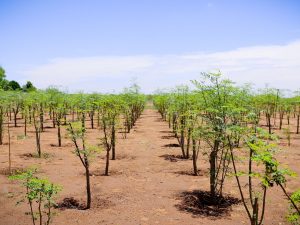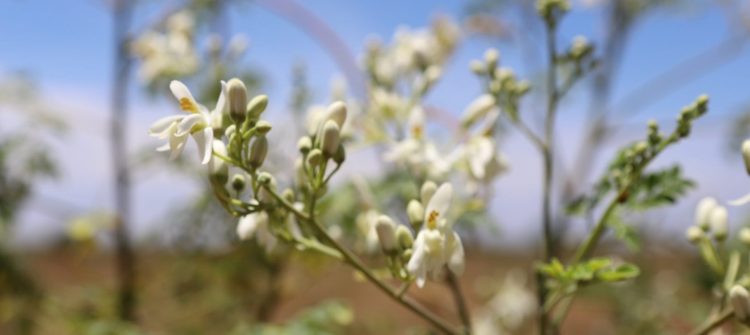The Origin of Moringa Oleifera
Moringa oleifera Lam (synonym: Moringa pterygosperm Gaertner) is the most famous of the thirteen species of the genus Moringacae. Thought to have origins in Agra and Oudh, located in northwest India, the southern Himalayas. The name “Shigon” for Moringa has mentioned in the book “Shushruta Sanhita” which was written in the early first century AD. There is evidence that this Moringa has been cultivated in India for thousands of years ago. The ancient peoples of India knew that seeds contained vegetable oil and they used it for medicinal purposes. Now, Indian society generally uses Moringa as animal or vegetable feed.
Although native to the southern foothills of the Himalayas, Moringa is present in all tropical countries. Today Moringa is cultivated throughout the Middle East, and in most of the tropics. First introduced in East Africa from India in the early 20th century. In Nicaragua, Moringa is known as Marango and was introduced in the 1920s as an ornamental plant and to be used as a live fence. The Moringa tree grows very well and is most often found in parts Pacific Nicaragua, but Moringa can be found in every forest area state.
Another source said, Moringa is native to the western region and around the sub-Himalayas, India, Pakistan, Asia Minor, Africa and Arabia (Somalia et al. 1984; Mughal et al, 1999) and now distributed in the Philippines, Cambodia, America Central, North and South America and the Caribbean Islands (Morton, 1991).
Moringa is known by many names in various countries and in the Dravidian language, There are many local names for Kelor, but all come from the root “Morunga”. In English it is commonly known as the Horseradish tree, Drumstick tree, Never Die tree, West Indian Ben tree, and Radish tree (Ramachandran et al., 1980).

Moringa is popularly called a ‘drumstick’ because of its pods that resemble drumsticks. Meanwhile in the Nile valley region, Kelor is known as ‘Shagara al Rauwaq’, which means ‘a tree that purifies’ (Von Maydell, 1986). In Pakistan, Moringa is locally known as ‘Sohanjna’ and grown and cultivated throughout the country (Qaiser, 1973, Anwar et al, 2005).
This fast growing tree is described by the world as one most nutritious plant known. Leaves contain content beta-carotene more than carrots, contains more protein than peas, more contains more vitamin C than oranges, the calcium content exceeds milk, contains more iron than spinach and contains more potassium lots of bananas.
Recently, Moringa has been used with success in fighting malnutrition in children and attempts to boost the immune system in many developing countries. The world of traditional medicine has long used Moringa for the treatment of various diseases, including recovery from liver damage. Moringa is often used to complement modern medicine in chronic sickness including those with AIDS and HIV-related illnesses.
In almost every country that has made Moringa as an agribusiness commodity, Moringa is used in various ways and is the main source of the eye commodity livelihood of farmers. In general, it is grown to be used for leaves, fruit, flowers and their roots, both as food, medicines, dyes, animal feed and waste water purifier. Communities in developing countries in Africa and Latin America, already consider Moringa oleifera as part of consumption needs daily, both in rural and urban areas.
For your inquiry about moringa oil/moringa powder :
Contact us :
E-mail: [email protected]
Phone: +6221-2903 4428
Fax: +6221-2903 4429
Sales Mobile/Whatsapp: +62813 8063 7778
Read more :
Maximum Profit Business Rely On Pure Moringa Oil
A Variety Of Business Ideas From Moringa Oleifera Oil

